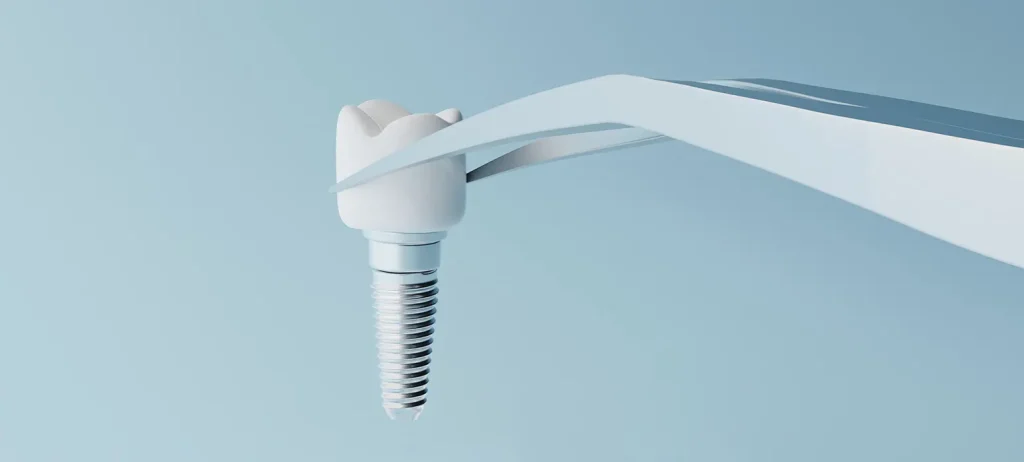Dental implants are prosthetics made of biocompatible materials, typically titanium, that are surgically placed into the jawbone to support replacement teeth. Dental implants offer a durable and long-term solution for replacing missing teeth and restoring oral functions.
The root, abutment, and crown are the three primary components of a dental implant. The root represents the core of the implant where the doctor inserts it directly into the bone in a surgical way whereas the abutment is the bond between the root and the crown.
What are the types of dental implants?
There are several types of dental implants, and each type meets a different need due to the patient’s clinical condition. These are the different types of dental implants:
Single-unit dental implants, also known as single-tooth implants or individual implants, are dental implants used to replace a single missing tooth
Unlike traditional bridges, which require the adjacent teeth to be ground down to support the restoration, single-unit implants are standalone replacements.
Single dental unit consists from thrree parts
we can refer to the the root as the implant body itself which can be inserted surgically into the patient’s jaw bone. The root is made from titanium alloys because they are durable and biocompatible.
- The Abutment:
The abutment is a connector piece that is attached to the root above the gumline. It serves as the attachment point for the dental restoration.
It is the visible part in the oral cavity that is above the dental implant. The dental crown could be porcelain or zirconium, and the color is compatible with the color of the surrounding teeth so that color compatibility is achieved and the aesthetic appearance is maintained.
Single-unit dental implants are recommended for patients who have a single missing tooth and are in good general health with sufficient jawbone density to support the implant. They offer a conservative and reliable solution for replacing missing teeth without affecting adjacent teeth. By using single-unit dental implants we can prevent bone loss associated with tooth loss, maintain facial structure, and prevent sagging or premature aging of the face.
Multiple teeth replacement refers to the process of replacing more than one missing tooth in the mouth. Replacing several missing teeth due to health issues, or accidents, with individual implants can be too expensive. As a solution, using multiple implants with dental bridges over them could be reasonable and reliable. However, ignoring your missing teeth problem will lead to bone loss and future complications.There are several options available for replacing multiple missing teeth like bridges on implants and All-on-4 or All-on-6 Implants
Bridges on implants, also known as implant-supported bridges. In this case, the dentist will use two or more dental implants ( no more than 8 implants in each jaw) that are surgically placed into the jawbone to fix a partial or total bridge in the patient’s mouth cavity. Bridges on implants offer a durable and long-lasting solution for replacing multiple missing teeth and restoring oral health and function.
All-on-4 dental implants are an innovative treatment option for patients with no teeth in either the upper or lower jaw. The name comes from its technique which involves the placement of only four dental implants in the front area of the jaw to support a complete fixed prosthesis a bridge or denture that replaces all the missing teeth.
Compared to traditional removable dentures, All-on-4 dental implants are more permanent and stable solution we can use All-on-4 technique in these conditions:
- Severe Tooth Loss:.
- Very Low Bone density.
- Unstable Dentures.



